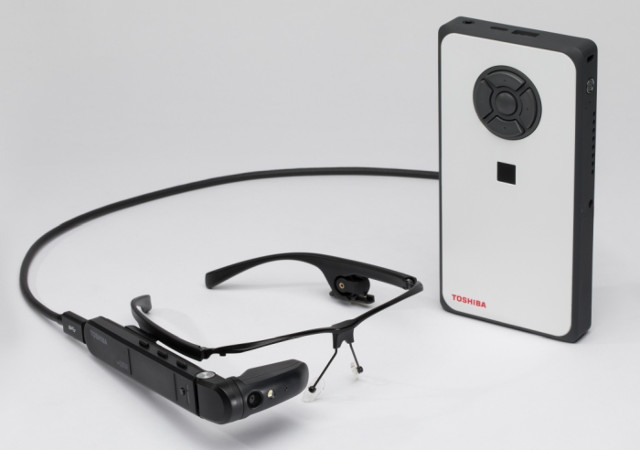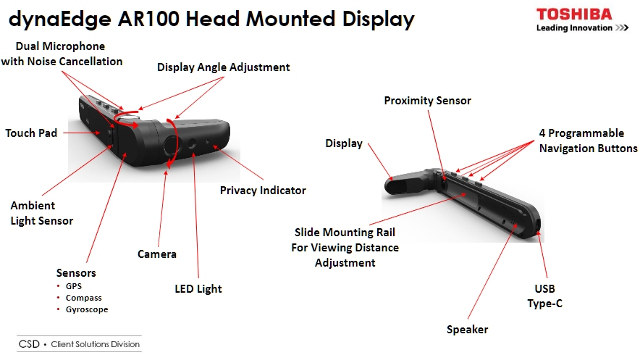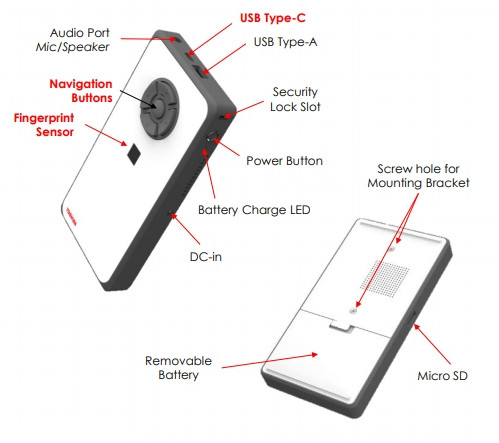Smart glasses have never really gained traction in the consumer space, but they can still be useful in the workplace, especially with augmented reality, where relevant data can be overlaid on top of the user’s view.
Toshiba has launched one of those products with dynaEdge AR smart glasses, but instead of having the battery and electronics on the glasses themselves, a portable mini PC running Windows takes care of the heavy lifting and the battery. This should make the glasses lighter – provided proper cable management -, and offer longer battery life.
 dynaEdge AR100 head mounted display (HMD) specifications:
dynaEdge AR100 head mounted display (HMD) specifications:
- Display – 0.26″ with 640 x 360 resolution (equivalent to 4.1″ display about 35cm away); angle adjustment
- Audio – Dual microphone with noise cancellation, speaker
- USB – USB type C port to connect to mini PC
- Sensors – Ambient light, compass, gyroscope, proximity
- Location – GPS support
- Built-in Camera
- Misc – Touchpad, LED light, privacy indicator, 4x programmable buttons
- Weight – ~57 grams
The mobile PC used with the HMD is called “dynaEdge Mobile mini PC”, and was announced last year with the following specifications:
- SoC – Intel Skylake Core M processor
- System Memory – 4GB, 8GB or 16GB on-board LPDDR3
- Storage – 128GB, 256GB or 256 GB SATA M.2 SSD, micro SD slot
- Connectivity – Intel dual band Wireless-AC 8260 (802.11ac 2×2 WiFI + Bluetooth); 3G/LTE (design ready)
- Audio – 3.5mm audio jack (mic/speaker)
- USB – 1x USB type C port (display out), 1x USB 3.0 type A port
- Security – TPM 2.0, fingerprint reader, security lock slot
- Misc – Power button, 5 navigation buttons, battery charge LED, screw hole for mounting bracket
- Battery – Removable battery
- Power Supply – 45W AC adapter
- Dimensions – 165 x 85 x 20 mm
- Weight – 310 grams
The mini PC will ship with Windows 10 Pro pre-installed
The glasses will come with mounting options such as hard hat mounts, safety frames, and headbands. The solution is scheduled to start selling in Q2 2018 for $1,900 and up.
Via Liliputing

Jean-Luc started CNX Software in 2010 as a part-time endeavor, before quitting his job as a software engineering manager, and starting to write daily news, and reviews full time later in 2011.
Support CNX Software! Donate via cryptocurrencies, become a Patron on Patreon, or purchase goods on Amazon or Aliexpress






